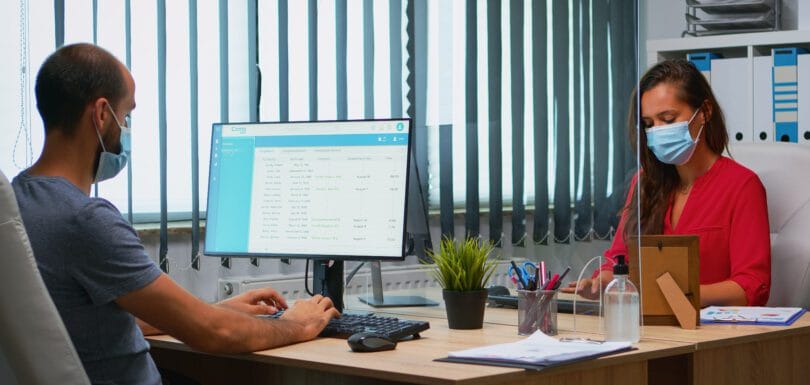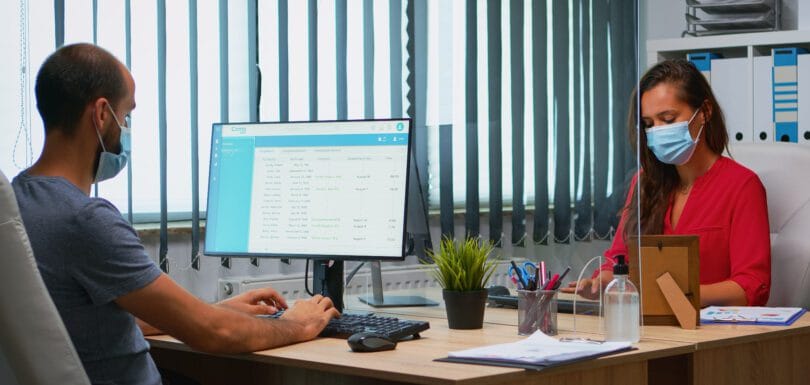Simple and Secure Virtual Front Desk Setup for Clinics
Virtual Front Desk Setup Checklist for Healthcare Offices In today’s busy healthcare world, having a virtual front desk setup has become a total game-changer for clinics and medical offices. Instead of relying on a person sitting at the front desk all day, a virtual front desk helps handle phone calls, schedule appointments, and answer patient questions right from anywhere. It saves money, cuts down wait times, and makes the whole patient experience feel smoother and more personal. But honestly, setting it up isn’t just about hiring someone online and hoping for the best. There’s a lot to think about like choosing the right technology, making sure patient information stays private, and training your team to keep things running without a hitch. That’s where having a solid checklist comes in handy. It helps you get everything organized step-by-step, so your office runs like a well-oiled machine, and your patients feel truly cared for. Whether you’re thinking about bringing on a virtual medical assistant nor just want to make sure your office stays efficient, this guide will walk you through exactly what you need to know. So, let’s dive in and make sure your virtual front desk is set up for success from day one. Why Your Healthcare Office Needs a Virtual Front Desk Running a healthcare office can be hectic. Without a virtual front desk, staff often get overwhelmed managing calls, patient scheduling, and billing, which can lead to errors and delays. Using a virtual medical assistant helps take some pressure off, allowing doctors and nurses to focus on patient care instead of paperwork. This kind of support improves efficiency, meaning patients get answers faster, and appointments run more smoothly. It also reduces costs because you don’t have to pay for a full-time in-office receptionist. Many healthcare practices struggle with managing patient flow and communication, especially during busy hours. A healthcare virtual assistant can handle tasks like confirming appointments, answering routine questions, and directing calls to the right place. This results in happier patients and fewer missed calls. Without a clear setup plan, healthcare offices may face issues like poor technology use or lack of staff training. That’s why having a detailed checklist for the virtual front desk setup is essential. It helps make sure everything is ready before going live, which means fewer problems and better service from day one. Key Components of an Effective Virtual Front Desk Setup First, good hardware is the foundation. Your virtual assistant needs a reliable computer with a headset and webcam to communicate clearly. A strong internet connection is a must to avoid dropped calls or slow responses. Without these basics, even the best virtual assistant will struggle. Next comes software. It’s important to use HIPAA-compliant communication tools to protect patient privacy. Scheduling systems that connect to your Electronic Health Records (EHR) make managing appointments easier and prevent double bookings. Many virtual medical office assistant services come with software that links all these tools together, saving time and reducing errors. Security cannot be overlooked. Encrypting data and using secure cloud storage keeps sensitive patient information safe. Access controls should limit who can see what, ensuring only authorized staff handle confidential data. A virtual medical administrative assistant trained in these protocols helps keep your office compliant with healthcare rules. Choosing the right software platforms and tools can make or break your virtual front desk. Look for user-friendly options that offer support and easy integration with your existing systems. This will help your team get started faster and avoid frustration. When setting up your system, make sure you’ve got these bases covered: Reliable computer setup A solid laptop or desktop that can handle video calls, scheduling software, and EHR access without freezing up mid-call. Noise-canceling headset So patients hear your virtual assistant clearly, not background chatter or keyboard clicks. Strong internet connection No one likes choppy video calls or delays. A good Wi-Fi plan is a must-have. HIPAA-compliant communication tools Think secure email, messaging, and calling apps that protect patient info. Smart scheduling software Easy for both staff and patients to use. Bonus points if it sends reminders automatically. EHR system integration So your assistant isn’t constantly toggling between tabs and software everything should work together. Data protection tools Use strong passwords, access restrictions, and encrypted storage to keep sensitive information safe. Building Your Setup Checklist Creating a step-by-step checklist makes the setup process much easier. Start by listing all the technology you need, including computers, headsets, and reliable internet service. Once the equipment is ready, focus on selecting the right virtual assistant. Look for someone with experience as a virtual medical assistant or healthcare virtual assistant, since they understand medical office work and patient needs. Training is key. Make sure your virtual assistant learns about HIPAA compliance and privacy rules. It’s also important to teach them your office’s specific workflows from patient intake to billing support. This helps avoid mistakes and keeps patients satisfied. Designing clear workflows is another important step. Your virtual assistant should know how to handle patient calls, schedule appointments, and manage any billing questions efficiently. Testing the system before launch is a must. Try mock calls and scheduling to catch any problems early. Finally, customize the checklist to your office size. Smaller clinics might have simpler needs, while larger practices may require multiple virtual assistants or advanced software. Keeping your checklist flexible ensures it works for you. Training and Managing Your Team Training isn’t just a one-and-done thing it’s ongoing. A virtual assistant for medical practice needs regular updates, especially with how quickly healthcare tech and privacy rules keep changing. It’s not just about clicking around in a system; it’s about knowing how to actually use those tools in real-life situations. Now, let’s not forget the soft skills. Being friendly, calm, and clear—those things matter just as much. Since your assistant is usually the first voice patients hear, their tone really sets the vibe. A warm greeting or a little patience when someone’s stressed out can make all the difference.











